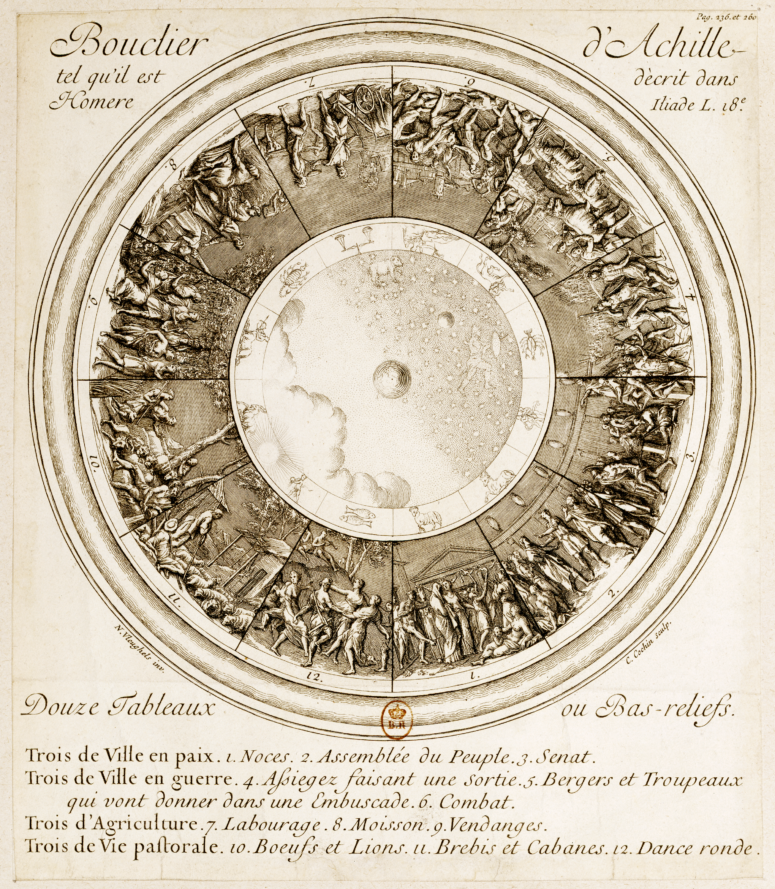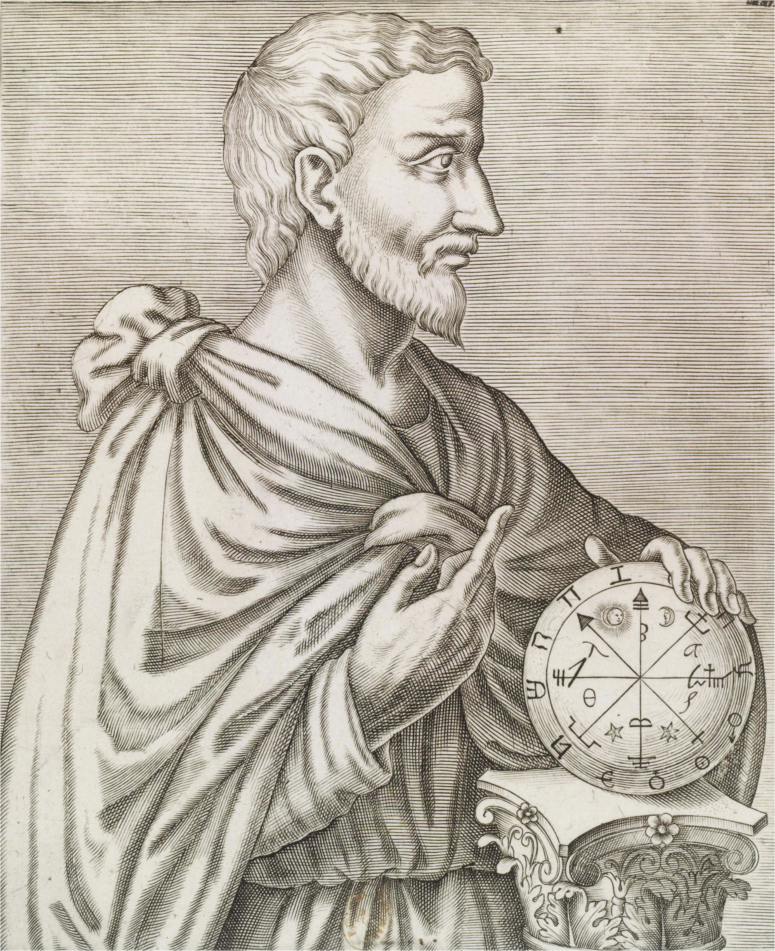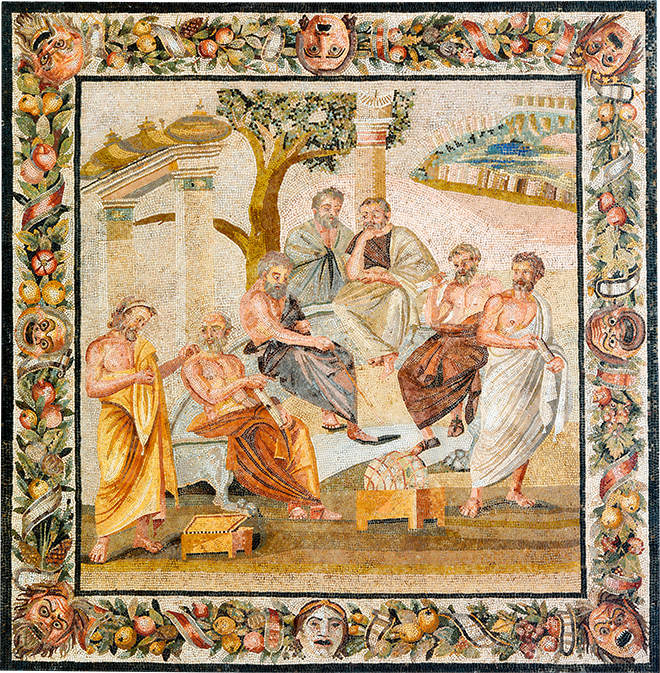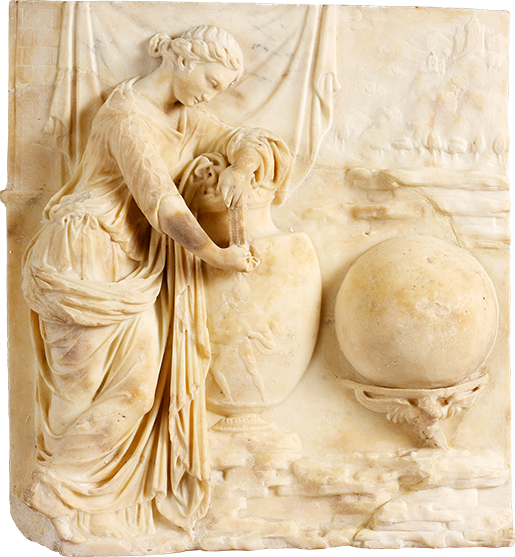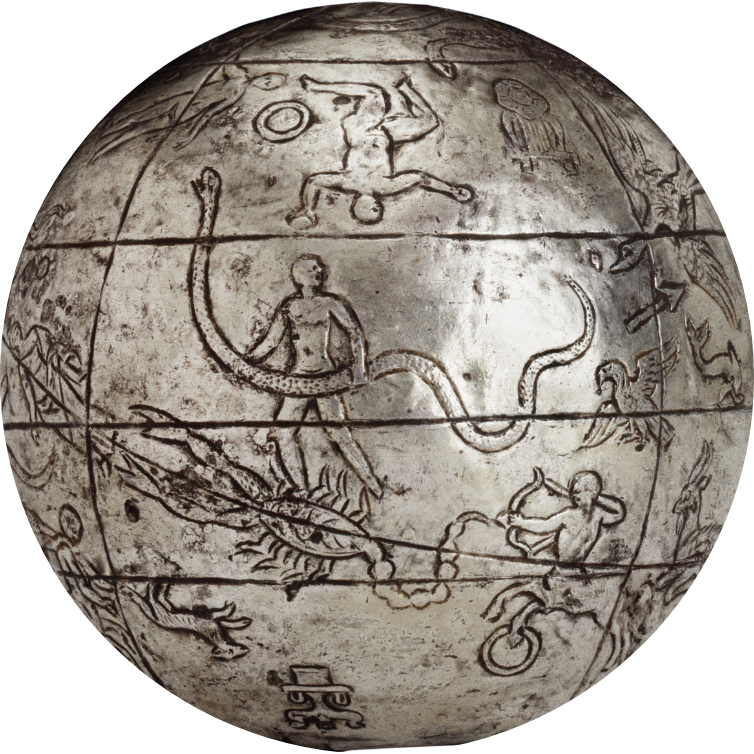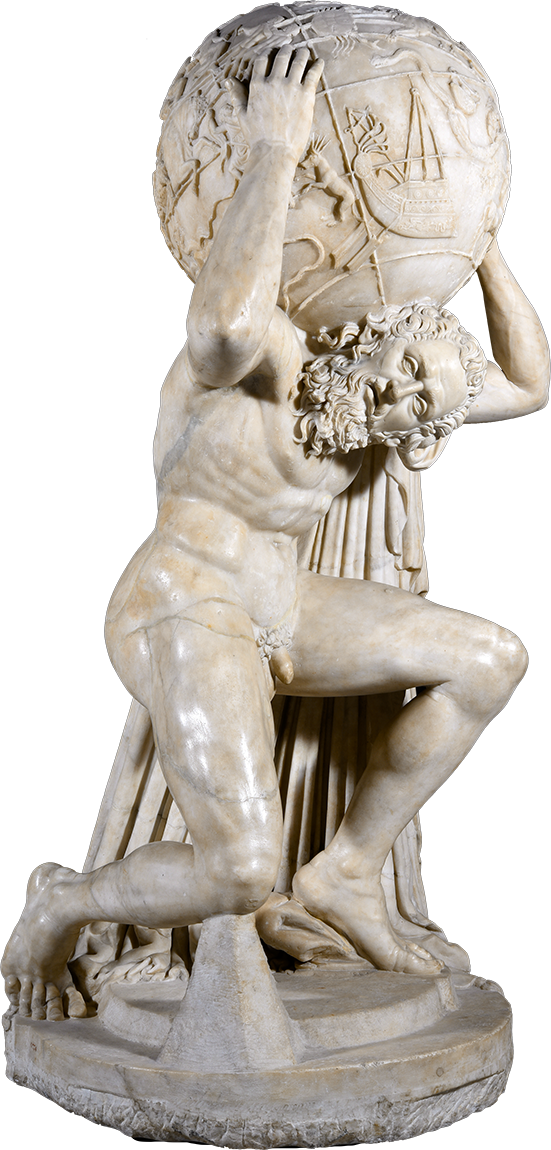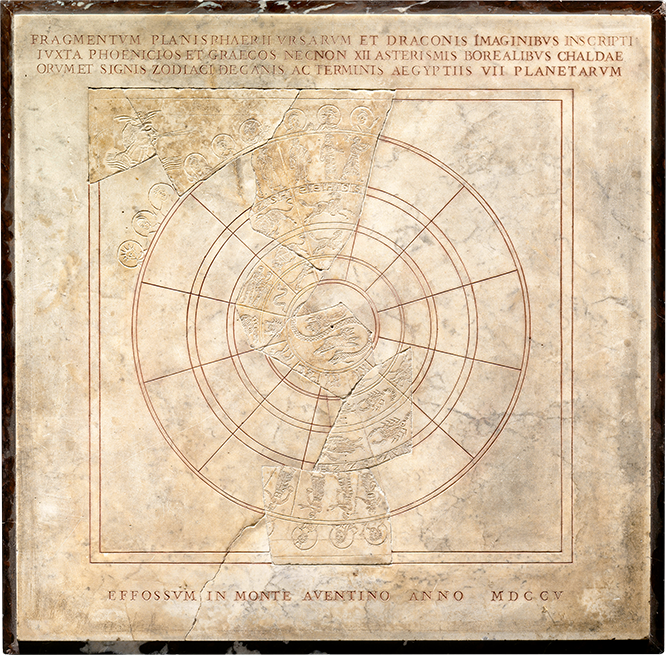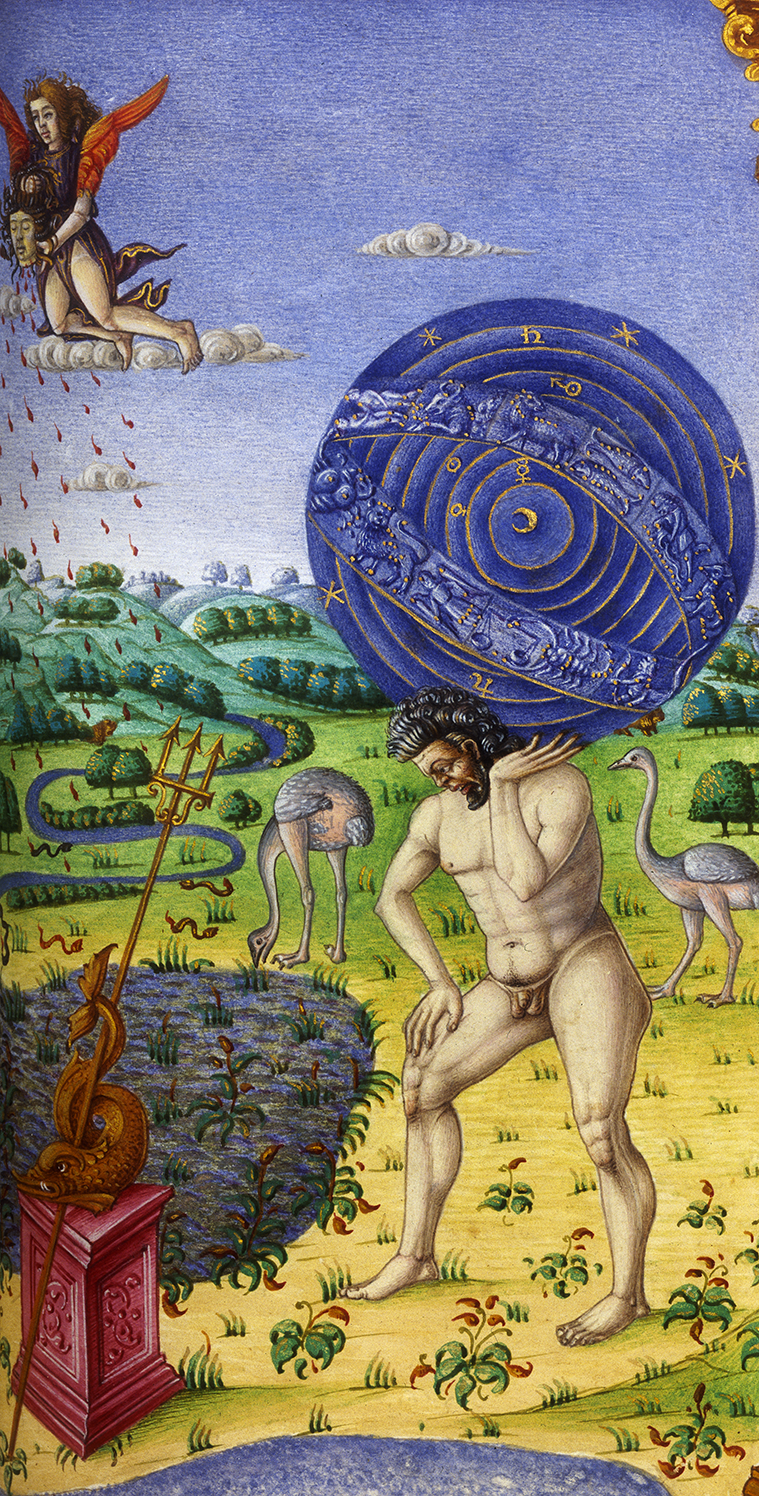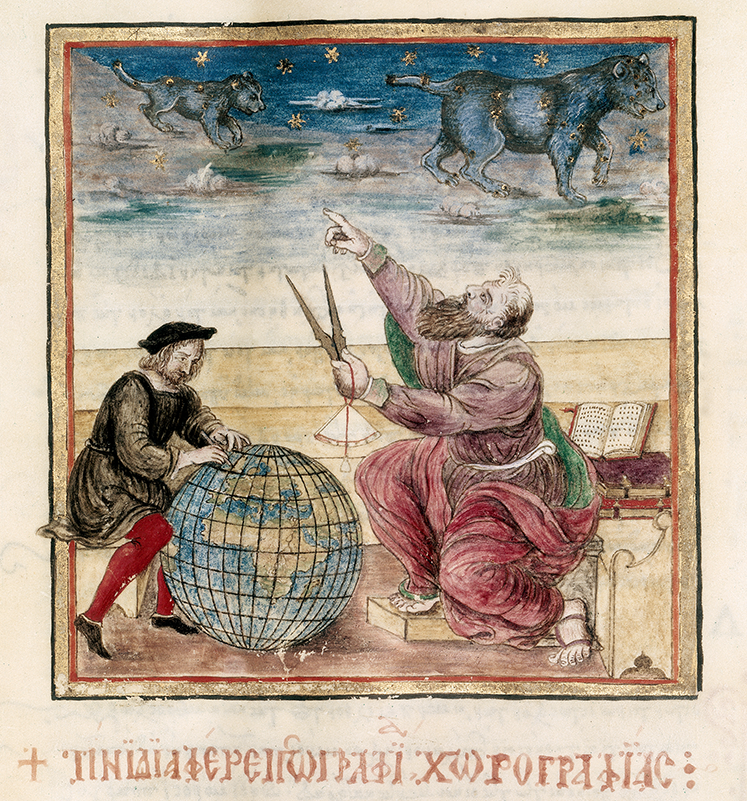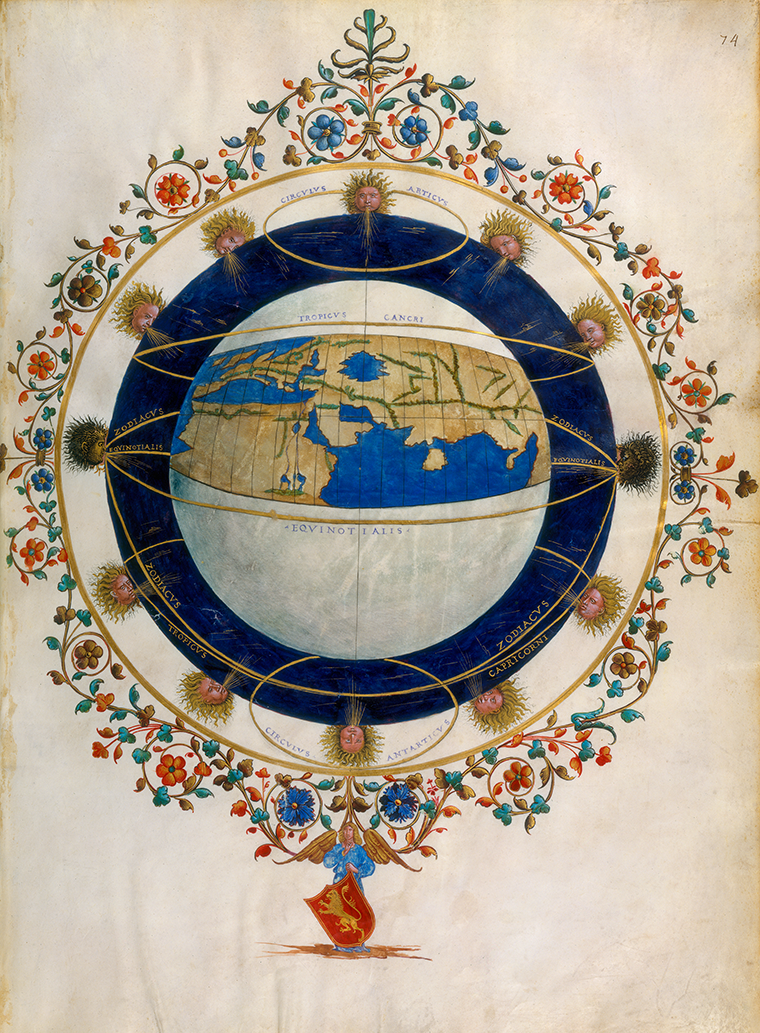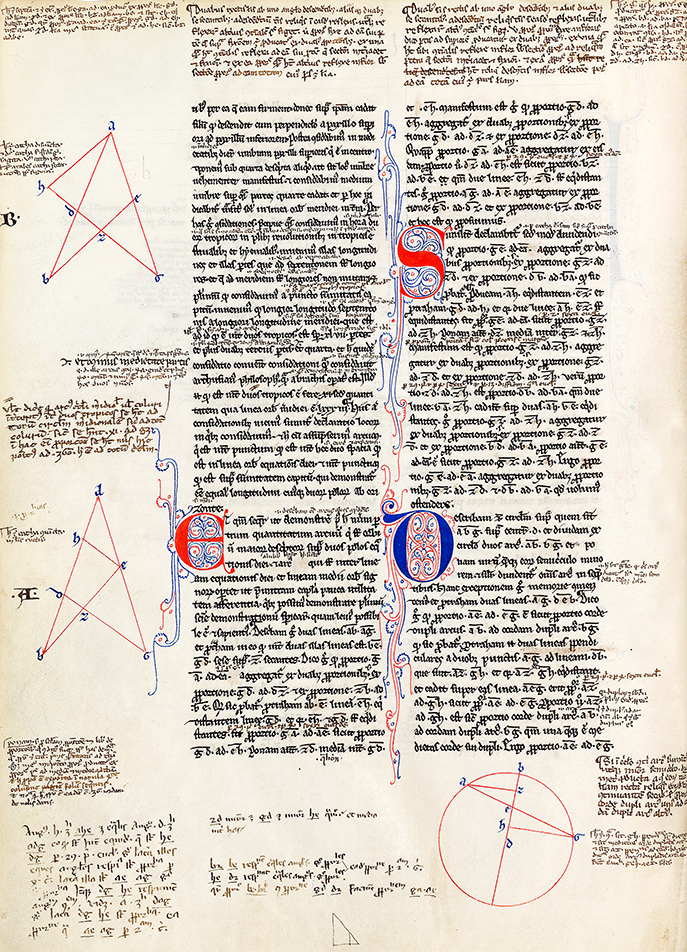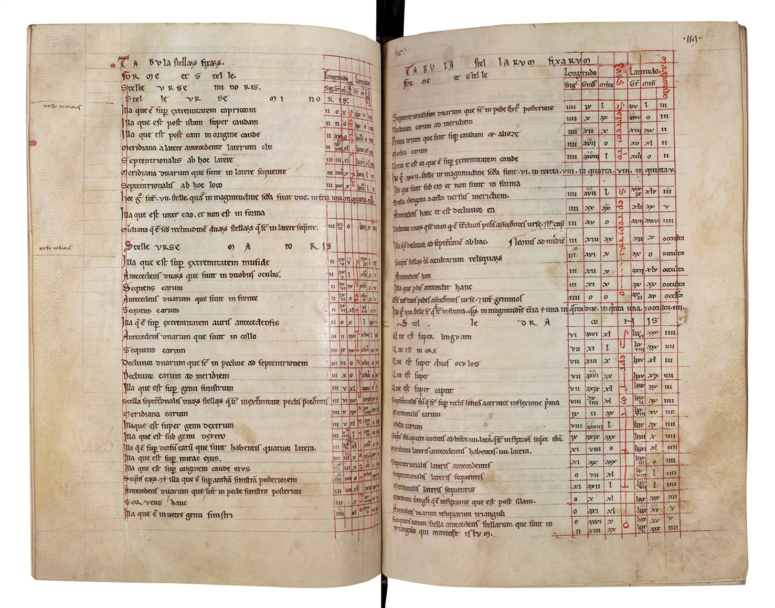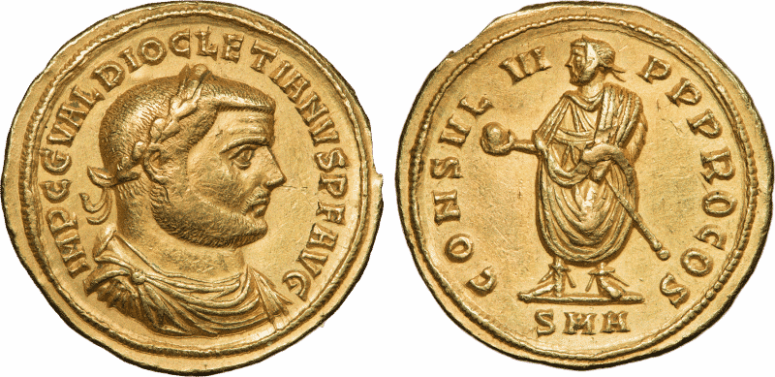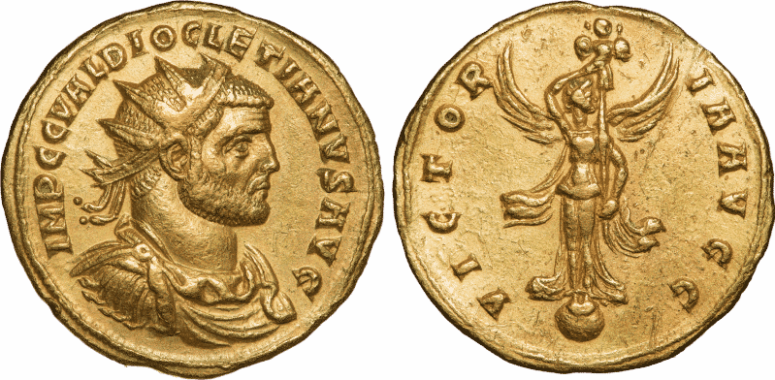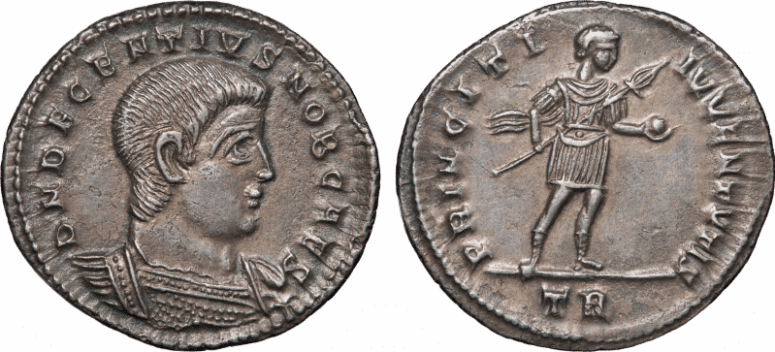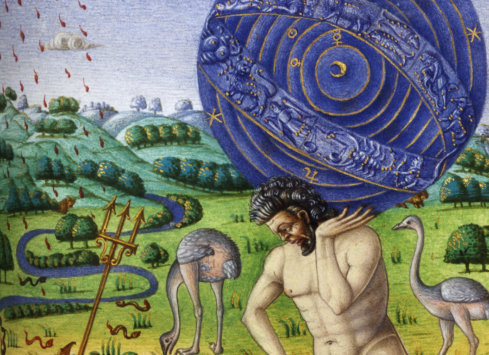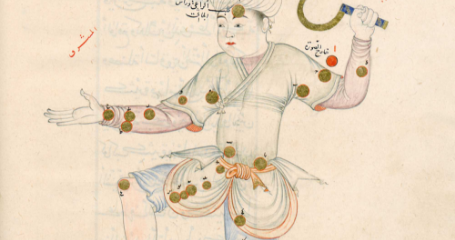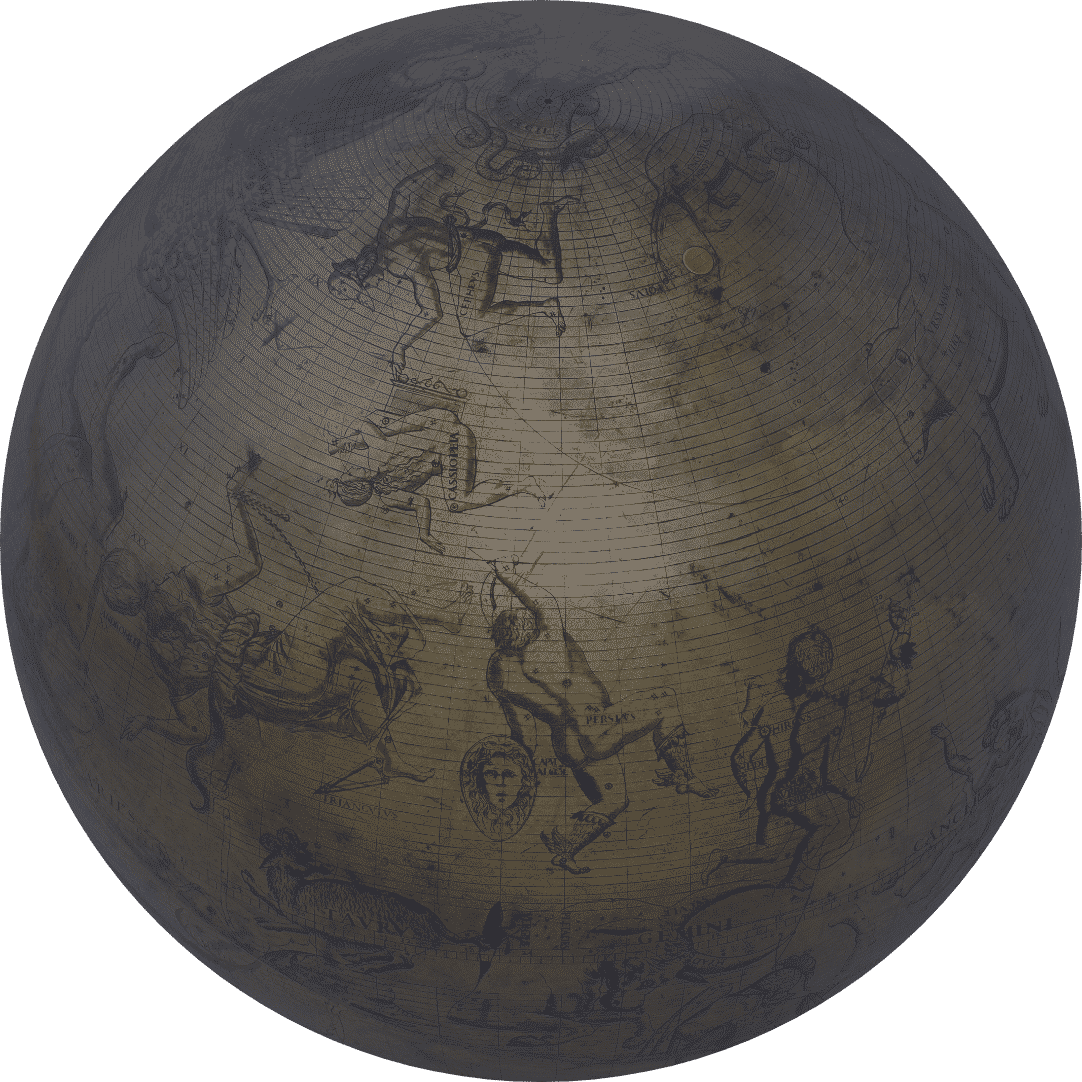
Inventing the Sphere
As heirs to Mesopotamian and Egyptian astronomy, from the sixth century B.C.E. onwards, scholars and philosophers from Greek cities (Thales, Anaximander, Pythagoras, Plato, Aristotle, etc.) theorized a spherical Earth in the center of a cosmos that was spherical too. A series of spheres holding the seven “planets” (the Moon, Mercury, Venus, the Sun, Mars, Jupiter, and Saturn) rotated around it, and the cosmos was contained by the outermost sphere, the sphere of “fixed stars.” These conceptions were based on a combination of practical observations and philosophical considerations.

For millennia, various civilizations each pictured the universe in its own way. In Antiquity, numerous models of the world emerged, often based on creation myths that saw the world as the abode of both the Gods and mankind, offering thousands of paths for mortals’ souls.
In Egypt, Babylon, Persia, India, China and elsewhere, the Earth was pictured in a range of diverse shapes: often flat, it could be rectangular, square, round, or composed of a string of islands; floating on the primeval waters, the Earth was often topped by a bowl-like sky or placed in the center of a cosmic edifice in the shape of an egg.
By the same token, in archaic Greece, Hesiod, Homer and the Labors of Hercules describe a flat, circular Earth, surrounded by an ocean and topped with a hemispherical bronze sky, the abode of Zeus, King of the Gods.
Between science & philosophy
Numbers rule the worldPYTHAGORAS, SIXTH CENTURY B.C.E.
In the sixth century before our era, a new conception of the world, one stripped off mythological narratives, began to appear in Ionian cities and Pythagorean circles. That conception was based both on observation of the sky’s cyclical motions – the Sun and Moon’s apparent trajectories, the rising and setting of stars, motion of planets, lunar and solar eclipses, etc. – and mathematical intuition. Analyzing the geometric properties of a sphere, one that was potentially animated by an immutable circular motion, Pythagoras, in the sixth century B.C.E.; and Plato, Aristotle and their disciples in the fourth; settled on the sphere as the most suitable shape for a cosmos that was assumed to have been designed with harmonious proportions by a geometrician or a great architect: the Demiurge.
Despite the existence of alternative systems, like those of Heraclides Ponticus (fourth century B.C.E.) and Aristarchus of Samos (second century B.C.E.), that were partially or entirely heliocentric, the basic principle of a universe composed of concentric spheres holding the stars and the planets and rotating uniformly around the Earth, which was also spherical and immobile, constituted the dominant model all the way up to the Scientific Revolution set off by the sixteenth-century astronomer Nicolaus Copernicus.
From the third century B.C.E., concrete objects – celestial or terrestrial globes, armillary or planetary spheres, cosmographic machines and more – materialized those scientific theories, serving as instruments for observation, calculation, and demonstration. Very few of those objects have survived, however.
Wherefore he made the world in the form of a globe, round as from a lathe, having its extremes in every direction equidistant from the centre, the most perfect and the most like itself of all figures…Plato, Timaeus, fifth century b.c.e.
Our observations of the stars make it evident, not only that the Earth is circular, but also that it is a circle of no great size.Aristotle, on the heavens, fourth century b.c.e
Before it became a universally shared, concrete experience, the spherical model proceeded from an intellectual construction based on both observational evidence and philosophical considerations. This model was a framework for philosophical and metaphysical speculation: the Earth, like the universe, was necessarily round, because the sphere was a perfect shape, every point of its surface being equidistant from the center.
Plato and Aristotle defined the principal dogmas of the spherical model: a round, immobile Earth at the center, and the celestial bodies’ uniform circular motions around it. Eudoxus of Cnidus was the first to develop a 27-sphere mathematical model conveying the motions of all the known celestial bodies. Their work was passed on to us by poets like Aratus of Soli and later scholars (Strabo, Ptolemy, Macrobe).
None of the original texts from Antiquity have reached us. We know about the work of the ancient scholars thanks to copies made in the Middle Ages.
Ptolemy’s three treatises
The heaven is spherical in shape, and moves as a sphere.Ptolemy, Almagest, i, 2
In the second century of the modern era, the Greek conception of an enclosed universe composed of concentric spheres holding the “fixed stars” and the “seven wandering stars” rotating uniformly around the spherical, immobile Earth in the center was perfected and assembled by Claudius Ptolemy, a scholar from Alexandria. His three most important works, the treatises known as the Almagest, the Geography, and the Tetrabiblos, are magisterial compendia of Greco-Roman knowledge.
The Almagest presents celestial mechanics, catalogues some 1,000 or more stars grouped into 48 constellations, and explains how to build a celestial globe; the Geography describes the ecumene, or the known, inhabited part of the Earth, and informs readers on different ways to make a terrestrial globe or to design maps according to diverse projections of the sphere onto a flat surface. The Tetrabiblos is an astronomy treatise in which Ptolemy analyzes the stars’ presumed influence on human destinies. Successively passed down to the Byzantines, the Arabs, and the Latinate west for nearly 1,500 years, his work constituted the principal reference for astronomers, mathematicians and other scholars.
The sphere of Cesars and Emperors
The recurrent presence of spheres in the arts of Antiquity bears witness both to their prestige and to awareness of them beyond scholarly circles, as well as to the influence they were believed to have on the fates of both the hoi polloi and princes. Seen in statuary, frescoes, and mosaics, on coins and cameos, and even in literature, with Cicero’s Dream of Scipio (54 B.C.E.), the sphere became a commonplace that could be endowed with a range of different meanings.
In 75 B.C.E., globes suddenly started appearing on Roman coins. Starting with Augustus, they became an essential symbol of imperial power, and of his universal or even cosmic ambition. Two representations dominated: the Emperor holding the globe – and therefore the world – in his hand; and the Emperor paired with Victory, who, seated or standing atop a globe, legitimizes his power. The sphere was sometimes accompanied by other emblems that colored its meaning: the lance, a symbol of military action; or the phoenix, the ever-reborn bird associated with the sun, which symbolized eternity.
Similar motifs can also be found on glyptics (engravings on stones and jewels). The “Triumph of Licinius” cameo (fourth century) added a cosmic dimension to the Emperor’s victory by including the gods Sol and Luna: the two celestial bodies that could be seen day after day implied.
With the spread of Christianity, globes started to be topped by a cross, symbolizing the celestial essence of power over the world.
Although it was an abstract construction based on judiciously interpreted observations rather than the fruit of concrete experience of the world, in ancient Greece and Rome, representing the universe in a spherical shape was nonetheless a recognized and admired skill, one that could be found on every shore of the Mediterranean. The model incarnated in globes and spheres offered a concrete framework, both for accumulated knowledge and for philosophical and metaphysical speculation. During the Medieval era, this ancient knowledge would be inherited and reinterpreted by two discrete but nonetheless inter-connected civilizations: the Arabic-speaking Muslim world and Western Christianity. In both regions, astronomy’s primacy over geography was marked.

